Are you ready to dive into the world of planting a large garden? In this ultimate guide, I’ll share my top tips and secrets for successfully growing a bountiful garden in a big space. Starting a large garden may seem overwhelming, but with the right planning and knowledge, you’ll be able to enjoy fresh, homegrown vegetables right in your backyard.
Key Takeaways:
- Proper planning and location selection are crucial for the success of your large garden.
- Choose vegetables that you and your family enjoy eating, and consider the availability of certain vegetables at your local grocery store.
- Timing is important when it comes to planting, so pay attention to the planting times for different vegetables based on your local climate.
- Utilize tools like the Old Farmer’s Almanac’s Garden Planner to design and track your garden plan.
- Prepare your soil by adding organic matter and ensure your plants receive sufficient water and sunlight.
By following these tips and secrets, you’ll be well on your way to planting a large garden theat will provide you with an abundance of fresh, homegrown vegetables. So, let’s get started!
The Importance of Planning and Location Selection
Before you start digging, it’s crucial to plan your large garden and carefully choose the best location for your plants to thrive. Planning ensures that you make the most of your space and resources, while selecting the right location sets the foundation for a successful garden.
When it comes to planning, start by determining the size of your garden. If you’re a beginner, it’s recommended to start small and gradually expand as you gain experience and confidence. This allows you to manage your garden effectively and avoid being overwhelmed.
Next, consider the layout and design of your garden. Think about how you want your garden to look and how you can maximize space and aesthetics. You can create a table to visually map out the different areas and plan where each vegetable will be planted. This helps you organize your garden and makes it easier to rotate crops to ensure optimal soil health.
| Planning Tips | Location Selection Guidelines |
|---|---|
|
|
When choosing a location for your large garden, consider finding a sunny spot that gets at least 6-8 hours of direct sunlight each day. Most vegetables thrive in full sun, so make sure to avoid areas that are heavily shaded. Additionally, good drainage is essential to prevent waterlogging, which can lead to root rot and other problems. Test your soil’s drainage by digging a hole and filling it with water. If the water drains within 24 hours, the location has good drainage. Lastly, try to avoid areas that are prone to strong winds, as they can damage your plants and inhibit their growth.
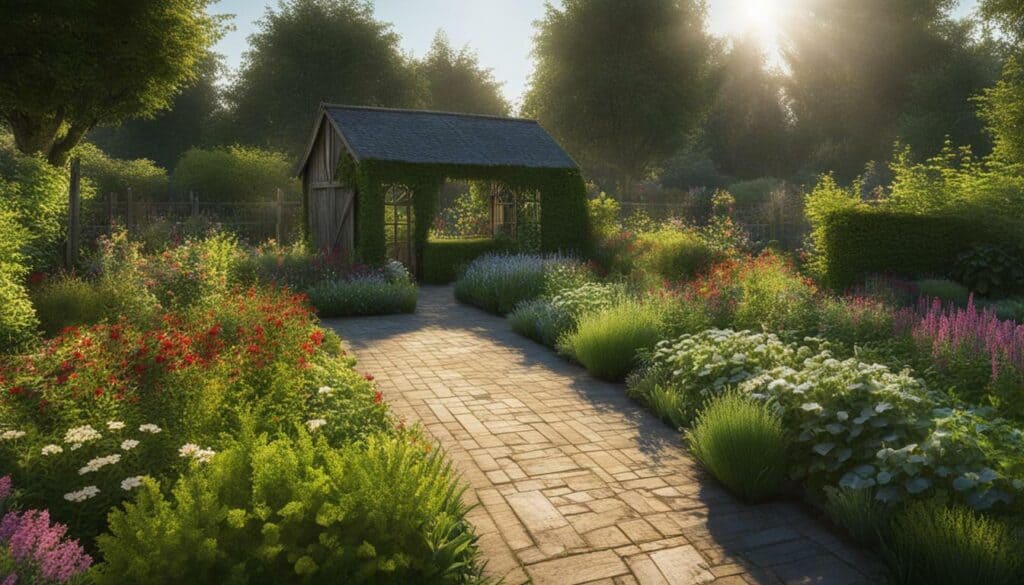
The Benefits of Planning and Choosing the Right Location
Effective planning and selecting the right location for your large garden offer numerous benefits. By planning ahead, you can optimize your space, resources, and time, resulting in a more productive and enjoyable gardening experience. Choosing the right location ensures that your plants receive the necessary sunlight, water, and space for healthy growth, leading to higher yields and better quality produce.
With a well-planned garden and a suitable location, you’re one step closer to successfully cultivating a diverse range of vegetables in your backyard. In the next section, we will explore how to choose the right vegetables for your large garden, considering your preferences and the suitability of different vegetables for your area.
Choosing the Right Vegetables for Your Large Garden
In order to have a successful large garden, it’s essential to choose the right vegetables that will flourish in your specific environment and satisfy your taste buds. When planning your vegetable selection, consider the following factors:
- Your preferences: Start by selecting vegetables that you and your family enjoy eating. After all, the ultimate goal is to grow food that you’ll savor and relish in your meals.
- Availability: Take into account the availability of certain vegetables at your local grocery store. Growing vegetables that are expensive or hard to find can be not only cost-effective but also rewarding.
- Climate suitability: Choose vegetables that are well-adapted to your local climate. Some vegetables thrive in cooler conditions, while others require more heat and sunlight. Be mindful of your region’s temperature and weather patterns.
- Garden space: Assess the size of your garden and consider the space requirements of different vegetables. Some plants, like sprawling squash or vining tomatoes, may need ample room to grow and spread out.
By considering these factors, you can create a diverse and productive garden that caters to your specific tastes and garden space. Remember, it’s always a good idea to start with a smaller selection of vegetables and expand as you gain experience and confidence in your gardening skills.
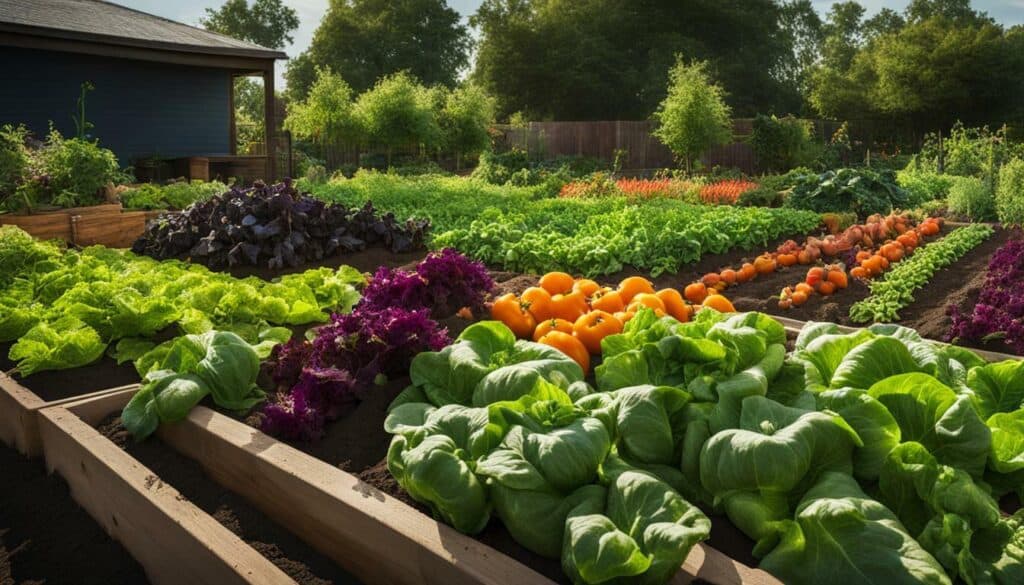
Tips and Secrets for Successful Vegetable Selection
Here are a few additional tips to keep in mind when choosing vegetables for your large garden:
- Companion planting: Explore the concept of companion planting, where certain plants are grown together to benefit each other and deter pests. For example, planting marigolds alongside tomatoes can help repel insects.
- Succession planting: Consider staggering your planting times to ensure a continuous harvest throughout the growing season. This technique involves planting new seeds or seedlings as older plants are harvested, maximizing your garden’s productivity.
- Experimentation: Don’t be afraid to try growing unique or less common vegetables. You might discover a new favorite or find that a lesser-known plant thrives in your garden’s specific conditions.
By carefully selecting your vegetables and implementing these tips, you’ll be well on your way to a bountiful and thriving large garden.
| Vegetable | Climate Suitability | Space Requirement |
|---|---|---|
| Tomatoes | Warm to hot | Staking or cage |
| Peppers | Warm to hot | Space-saving |
| Lettuce | Cool | Compact |
| Zucchini | Warm to hot | Spreading |
| Carrots | Cool | Deep soil |
Remember, each vegetable has its own unique requirements, so be sure to research and understand the specific needs of the vegetables you choose to grow. Happy gardening!
Timing is Everything – When to Plant Your Vegetables
Timing is crucial when it comes to planting a large garden, as planting your vegetables at the right time can significantly impact their growth and productivity. To ensure a successful garden, it’s important to understand the planting times for different vegetables based on your local climate.
The best time to start your big garden depends on the frost dates in your area. You may need to start indoors with seeds or purchase seedlings from a nursery. Some vegetables, like tomatoes and peppers, benefit from starting them indoors a few weeks before the last frost. Others, like peas and lettuce, can be directly sown in the garden as soon as the soil is workable.

Creating a planting schedule can help you stay organized and ensure that you have a continuous harvest throughout the growing season. Utilize tools like the Old Farmer’s Almanac’s Garden Planner to keep track of your planting and harvesting dates. This tool allows you to input your location and provides customized planting recommendations based on your area’s climate and frost dates.
| Vegetable | Recommended Planting Time |
|---|---|
| Tomatoes | Start indoors 6-8 weeks before last frost |
| Peppers | Start indoors 8-10 weeks before last frost |
| Carrots | Direct sow as soon as soil is workable |
| Cucumbers | Direct sow after danger of frost has passed |
| Radishes | Direct sow as soon as soil is workable |
Remember to also consider the length of your growing season when planning your garden. Some vegetables, like corn and winter squash, require a longer growing period and may not be suitable for regions with shorter summers. By understanding the optimal planting times for your chosen vegetables, you can give them the best chance of success and enjoy a bountiful harvest.
Creating a Garden Plan with the Old Farmer’s Almanac’s Garden Planner
Get organized and streamline your large garden planning using the user-friendly Old Farmer’s Almanac’s Garden Planner. This online tool is designed to assist gardeners in creating personalized garden plans based on their specific needs and preferences. Whether you’re a seasoned gardener or just starting out, the Garden Planner can help you design a productive and beautiful garden.
The Garden Planner allows you to easily create a layout for your large garden, providing a virtual canvas where you can drag and drop plants, structures, and other elements. The tool offers a wide selection of vegetables, herbs, and flowers to choose from, ensuring that you have the right plants for your garden. You can also input your location to receive personalized planting and harvesting dates, taking into account your local climate.
Not only does the Garden Planner help you design your garden, but it also provides valuable information on companion planting, crop rotation, and spacing requirements. By following these guidelines, you can optimize the growth and yield of your plants. The tool also allows you to keep track of important tasks and reminders, ensuring that you stay on top of your garden’s needs throughout the growing season.
| Key Features of Old Farmer’s Almanac’s Garden Planner: |
|---|
| Easy-to-use interface |
| Drag and drop functionality |
| Wide selection of plants |
| Personalized planting and harvesting dates |
| Companion planting and crop rotation guidance |
| Task and reminder tracking |
With the Old Farmer’s Almanac’s Garden Planner, you can take the guesswork out of your large garden design and ensure that your plants thrive. Plan, plant, and harvest with confidence, and enjoy a bountiful garden season after season!
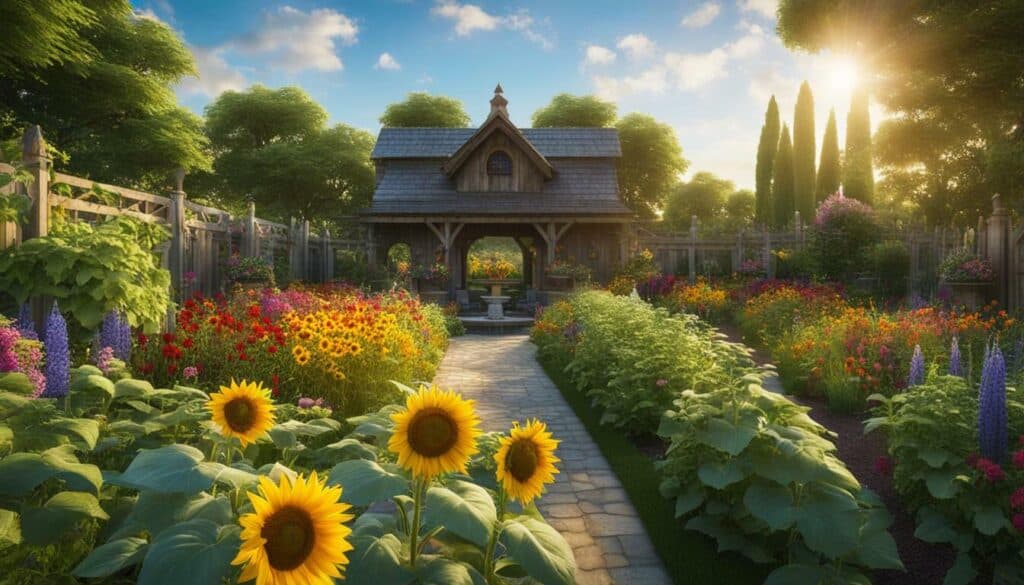
Preparing the Soil for Optimal Plant Growth
Before you start planting, it’s crucial to prepare your soil properly to provide the optimal conditions for your plants to thrive. Good soil preparation ensures that your plants have access to essential nutrients, water, and oxygen, promoting healthy growth and increased yields. Here are some key steps to prepare your soil for a successful large garden:
- Clear the area: Start by removing any weeds, rocks, or debris from the planting area. This helps create a clean slate for your garden and prevents competition for nutrients.
- Test the soil: Conduct a soil test to determine its pH level and nutrient content. This information will guide you in making any necessary amendments to bring the soil to the ideal conditions for the vegetables you plan to grow. Most vegetables prefer a slightly acidic soil with a pH range of 6.0 to 7.0.
- Add organic matter: Incorporate organic matter such as compost, well-rotted manure, or leaf mold into the soil. This improves its texture, drainage, and water-holding capacity. Spread a layer of organic matter over the planting area and use a garden fork or tiller to mix it into the soil thoroughly.
Tip: If you have heavy clay soil, adding sand or perlite can help improve drainage. For sandy soil, adding compost or peat moss can enhance its water-holding capacity.
By enriching your soil with organic matter, you provide a steady supply of nutrients to your plants and improve the soil’s structure, making it easier for roots to penetrate and access nutrients. Organic matter also promotes beneficial microbial activity in the soil, further enhancing its fertility and health.
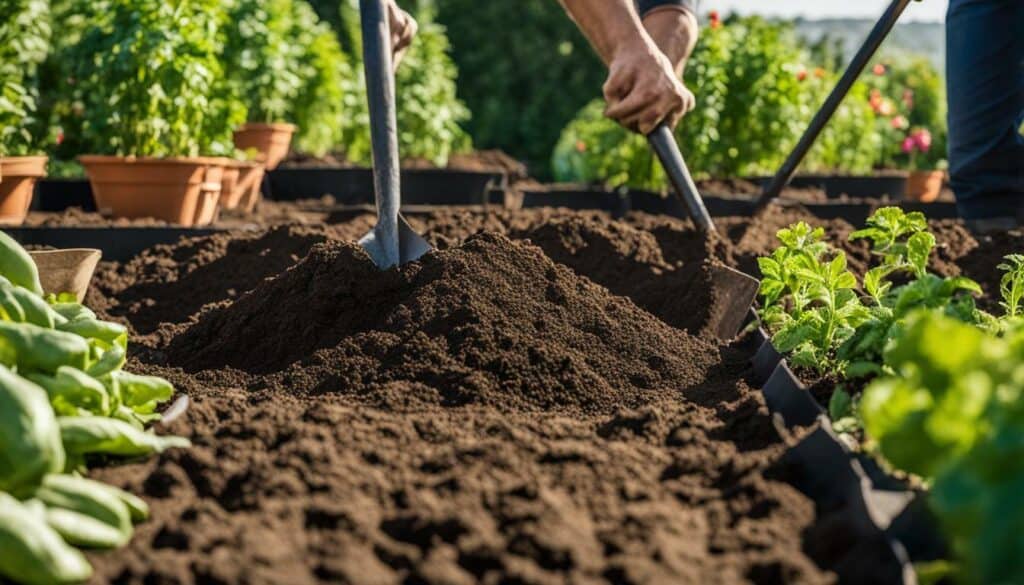
| Vegetable | Planting Depth (inches) | Spacing (inches) | Days to Maturity |
|---|---|---|---|
| Tomato | 1-2 | 24-36 | 60-85 |
| Cucumber | 1-2 | 12-24 | 50-70 |
| Carrot | 1/4-1/2 | 1-3 | 60-80 |
Once you have prepared your soil, it’s important to maintain its health throughout the growing season. Regularly monitor soil moisture levels and water your plants deeply when the top inch of soil feels dry. Mulching around your plants helps conserve moisture and suppress weeds.
Common Soil-related Problems and Solutions
- Compacted soil: If your soil becomes compacted, it restricts root growth and reduces water and nutrient absorption. Use a garden fork or tiller to loosen the soil gently, being careful not to damage the plants’ roots.
- Nutrient deficiencies: Certain plants may show signs of nutrient deficiencies, such as yellowing leaves or stunted growth. Address these issues by applying appropriate organic fertilizers or amendments based on your soil test results.
- Soil erosion: Heavy rains or improper watering can lead to soil erosion, washing away valuable topsoil and exposing plant roots. Prevent erosion by adding organic matter, planting ground cover crops, or creating contour beds to trap water runoff.
By taking the time to properly prepare and maintain your soil, you’ll set the foundation for a thriving and bountiful large garden. Remember that soil health is a continuous process, and regular monitoring and care are essential for long-term success.
Proper Care for a Productive Garden
To ensure a productive and thriving garden, it’s important to provide your plants with the care they need, from proper watering and sunlight to proactive pest and disease management. Here are some essential gardening tips for large gardens:
Watering Tips
Watering is crucial for the health of your plants, especially in a large garden. It’s essential to water deeply and infrequently to encourage deep root growth. Use a soaker hose or drip irrigation system to ensure water goes directly to the roots while minimizing evaporation.
Proper Sunlight
Most vegetables require at least six to eight hours of direct sunlight, so choose a sunny location for your garden. However, evaluate your climate and the specific needs of your plants. Some plants may benefit from partial shade to avoid scorching during hot summer days.
Pest and Disease Management
Preventing and managing pests and diseases is crucial for a productive garden. Regularly inspect your plants for any signs of damage or infestation. Consider using natural pest control methods like companion planting, insect-repelling plants, and organic sprays. If necessary, consult with your local agricultural extension office for advice.
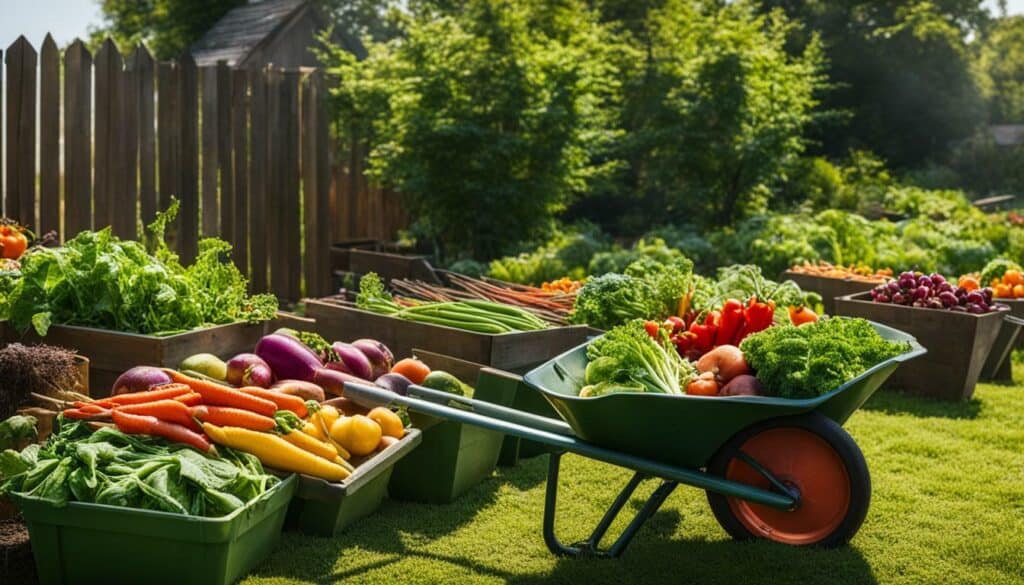
Weed Control
Weeds can compete with your plants for nutrients and water, so it’s important to keep them under control. Use a combination of mulching, hand pulling, and cultivating to manage weeds effectively. Mulching not only suppresses weed growth but also helps retain moisture in the soil.
| Weeding Tips | Pest Management |
|---|---|
| Regularly inspect your garden and remove any weeds as soon as possible to prevent them from taking over. | Identify common pests in your area and take preventive measures such as planting pest-resistant varieties and using physical barriers like row covers. |
| Apply mulch around your plants to smother weeds and reduce the need for constant weeding. | Introduce beneficial insects like ladybugs and lacewings to help control pest populations naturally. |
| Avoid tilling too deeply, as this can bring weed seeds to the surface and promote their germination. | Utilize organic pest control methods like neem oil, insecticidal soaps, and homemade remedies like garlic spray. |
By following these tips, you can ensure that your large garden thrives and yields a bountiful harvest. Remember that each garden is unique, so don’t be afraid to experiment and learn from your own experiences. Happy gardening!
Harvesting Your Vegetables at the Right Time
After all your hard work, it’s time to reap the rewards of your large garden by harvesting your vegetables at their peak ripeness. Knowing when to harvest each vegetable is essential to ensure maximum flavor and nutritional value. Here are some gardening tips for large gardens to help you determine the right time to pick your vegetables.
Observation is Key
The first step in harvesting your vegetables is to observe them closely. Pay attention to their size, color, texture, and aroma. Different vegetables have different indicators of ripeness. For example, tomatoes should be firm yet give slightly when gently squeezed, while lettuce leaves should be crisp and vibrant in color. By observing these characteristics, you can determine when your vegetables are ready for harvest.
Check the Harvesting Guides
Consulting harvesting guides is another valuable resource to determine the optimal time to pick your vegetables. Many gardening books or online sources provide specific information about each vegetable, including the average number of days it takes to reach maturity. These guides can give you a general idea of when you should start checking for ripeness and harvesting your vegetables.
| Vegetable | Harvesting Time |
|---|---|
| Tomatoes | When they are fully colored and firm |
| Lettuce | When leaves are full-sized and firm |
| Carrots | When roots are bright orange and crisp |
| Zucchinis | When they are around 6-8 inches long |
Remember that these are general guidelines, and the actual harvesting time may vary depending on factors like the weather, soil conditions, and specific variety of vegetable you are growing. It’s always best to combine your observations with the information from harvesting guides to ensure you pick your vegetables at their peak flavor and quality.
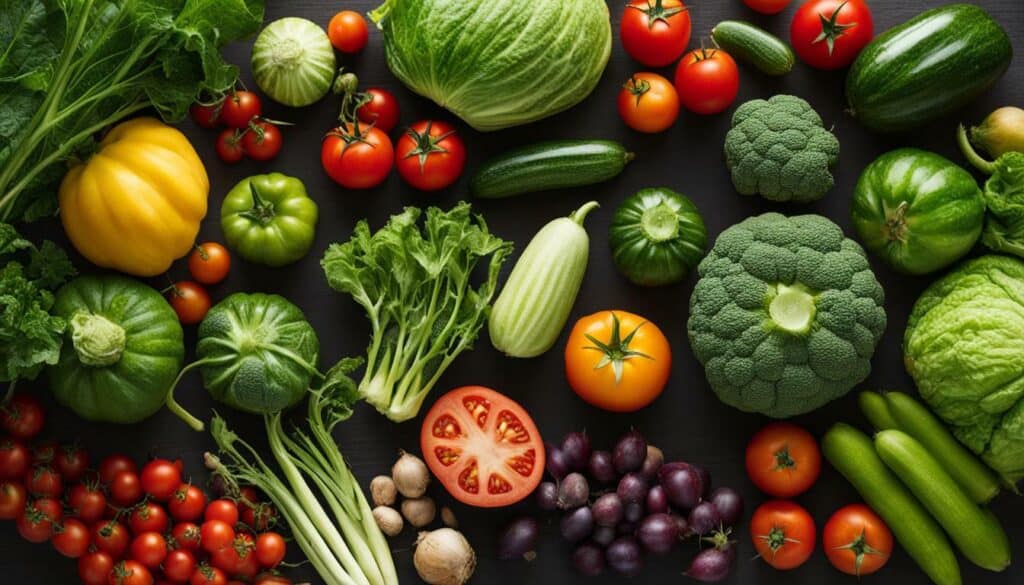
By following these gardening tips for large gardens and harvesting your vegetables at the right time, you can fully enjoy the fruits of your labor. Remember to savor the flavors of your freshly picked produce and share the harvest with family and friends. The satisfaction of eating your homegrown vegetables is truly rewarding and makes all the hard work worthwhile.
Enjoying the Fruits of Your Labor
Now that you have a bountiful harvest from your large garden, it’s time to savor the flavors of your homegrown produce and ensure the continuous success of your garden. There’s something incredibly satisfying about enjoying a meal made with vegetables you’ve nurtured from seed to plate. Whether you’re cooking a simple salad, stir-fry, or a hearty stew, your homegrown vegetables will add freshness and flavor to every dish. So, let’s explore some ways to make the most of your harvest and maintain a thriving garden for seasons to come.
One of the best ways to fully appreciate your homegrown vegetables is to incorporate them into diverse recipes that showcase their natural flavors. Experiment with different cooking techniques to highlight the unique qualities of each vegetable. Roasting vegetables brings out their natural sweetness, while steaming preserves their vibrant colors and crisp textures. Don’t be afraid to combine different vegetables in the same dish to create exciting flavor combinations.
To maintain a large garden’s long-term success, it’s essential to properly store your harvest. Some vegetables, like tomatoes and peppers, can be canned or turned into sauces for future use. Others, such as carrots, potatoes, and onions, can be stored in a cool, dark place to extend their shelf life. Freezing is another option for preserving vegetables like peas, corn, and green beans. By taking these steps, you can enjoy the fruits of your labor long after the gardening season has ended.
Table: Recommended Storage Methods for Common Vegetables
| Vegetable | Storage Method |
|---|---|
| Tomatoes | Canning or making sauces |
| Peppers | Canning or freezing |
| Carrots | Storing in a cool, dark place |
| Potatoes | Storing in a cool, dark place |
| Onions | Storing in a cool, dark place |
| Peas | Freezing |
| Corn | Freezing |
| Green Beans | Freezing |
Lastly, don’t forget to save some seeds from your favorite vegetables to use in future planting seasons. By preserving the seeds of your most successful plants, you can continue to grow the same flavorful varieties year after year. Properly dry and store the seeds in a cool, dry place to maintain their viability. Sharing your saved seeds with other fellow gardeners can also be a rewarding experience, fostering a sense of community and exchanging knowledge.
Remember, maintaining a large garden requires dedication and care, but the rewards are abundant. From the satisfaction of growing your own food to the joy of sharing it with family and friends, a flourishing garden provides a source of nourishment and happiness. So, cherish your homegrown produce, savor every bite, and continue to nurture your garden for a fruitful future.

Conclusion
Planting a large garden can be a rewarding and fulfilling experience, and with proper planning, care, and attention to detail, you can create a thriving garden that yields an abundance of fresh and delicious vegetables.
When starting your large garden, it’s important to carefully choose the right location. Look for a sunny spot that drains well and isn’t too windy. Start small and expand your garden as you gain experience, ensuring you pick a size that you can manage.
Choosing the right vegetables for your large garden is key. Consider your family’s preferences and the availability of certain vegetables at your grocery store. Pay attention to the planting times based on your local climate to ensure successful growth and a bountiful harvest.
Utilize tools like the Old Farmer’s Almanac’s Garden Planner to create a detailed garden plan and keep track of planting and harvesting dates. Prepare your soil by adding organic matter and ensure your plants receive adequate water and sunlight. Keep a watchful eye for weeds, pests, and diseases that may impact your garden’s health.
Finally, enjoy the fruits of your labor by harvesting your vegetables at the right time. This ensures maximum flavor and nutritional value. Whether you’re preparing delicious meals with your homegrown produce or simply enjoying the beauty of your garden, revel in the satisfaction of a successful large garden.
FAQ
Q: What factors should I consider when choosing a location for my large garden?
A: You should select a sunny spot that drains well and isn’t too windy. These factors will help ensure optimal growth for your plants.
Q: How do I determine the right size for my garden?
A: It’s recommended to start small and gradually expand as you gain experience. This approach allows you to manage your garden effectively and avoid feeling overwhelmed.
Q: How do I choose the right vegetables for my large garden?
A: Consider selecting vegetables that you and your family enjoy eating. Additionally, check the availability of certain vegetables at your local grocery store to ensure you can easily acquire them.
Q: Why is timing important for planting vegetables in a large garden?
A: Timing is crucial because different vegetables have specific planting times based on your local climate. It’s essential to follow these guidelines to maximize growth and yield.
Q: Are there any tools that can help me create a garden plan for my large garden?
A: Yes, the Old Farmer’s Almanac’s Garden Planner is a useful tool that can assist you in creating a garden plan and tracking important planting and harvesting dates.
Q: How do I prepare the soil for my large garden?
A: You can improve your soil’s quality by adding organic matter, such as compost or aged manure, to enrich the nutrients. Additionally, ensure proper drainage to promote healthy plant growth.
Q: What care practices should I follow to maintain a productive large garden?
A: It’s important to provide your plants with sufficient water and sunlight. Additionally, take measures to control weeds, pests, and diseases that may affect your garden’s productivity.
Q: When should I harvest my vegetables?
A: Harvesting your vegetables at the right time ensures they are at their peak flavor and nutritional value. Use visual cues, such as color and texture, to determine when they are ready to be picked.
Q: How can I enjoy the fruits of my labor from my large garden?
A: You can savor your homegrown vegetables by preparing delicious meals with them. Additionally, maintain your garden’s long-term success by regularly tending to it and addressing any issues that arise.
How Can Efficient Drainage Help in Planting a Large Garden Successfully?
Efficient garden catch basins play a crucial role in the successful planting of a large garden. By effectively draining excess water, they prevent waterlogging and create a favorable environment for plant growth. These basins ensure that excessive moisture is quickly removed, preventing root rot and keeping the soil well-nourished. With efficient drainage, your large garden can thrive, allowing your plants to flourish beautifully.

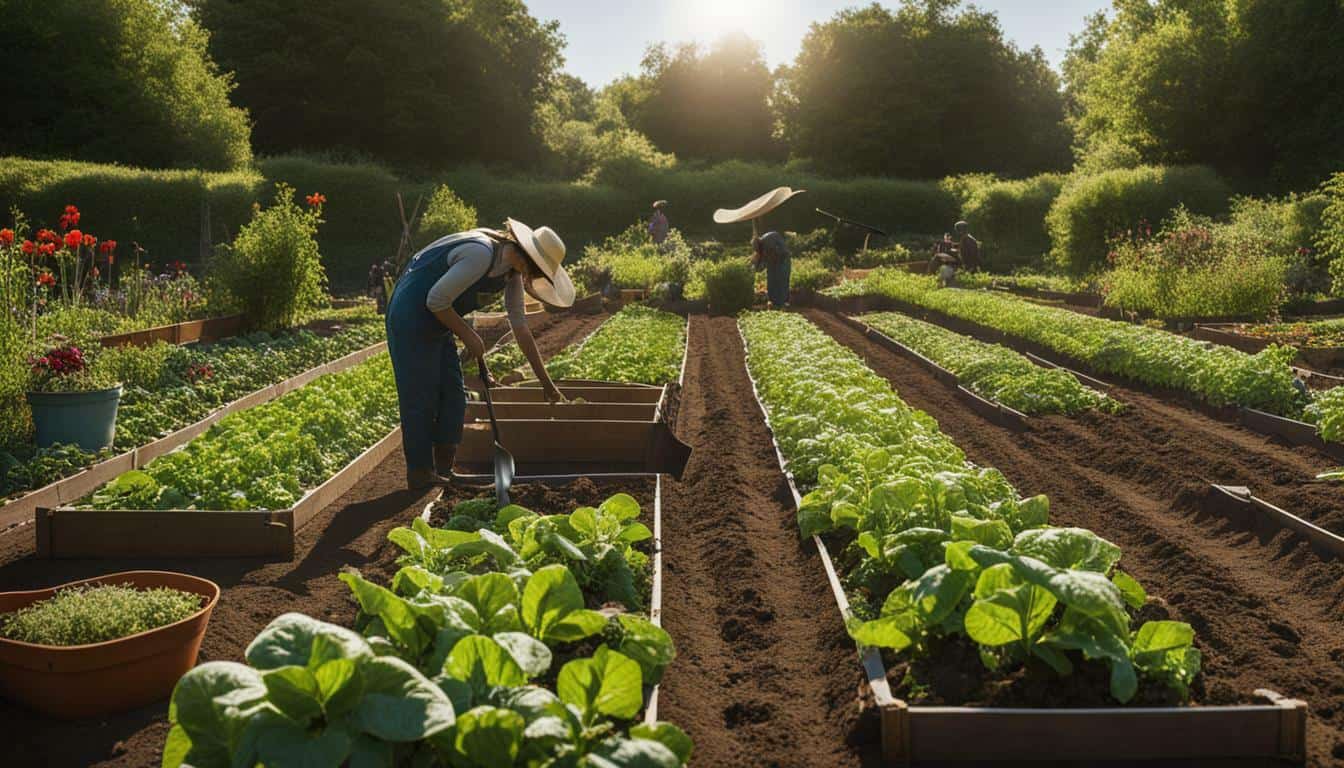



Leave a Reply